
Full, please
Sergio Guerrero
INTRODUCTION
In this new Blog entry, we will discuss Real Intra , an intra-workout product formulated using a selection of carbohydrates with different assimilation speeds and amino acids, whose combination helps maintain a high level of energy throughout the training session, ensuring thus greater efficiency, protecting the digestive tract and achieving proper recovery .
To do this, the BIG Science working group has developed this product based on the following ingredients:
- Dextrose
- Cyclodextrin
- Fructose
- Isomaltulose
- Essential amino acids
- Sodium

CARBON HYDRATES
To put ourselves in context, and I am not going to delve too deeply into the topic of glycogen or ATP to make it simpler, but as a summary we can say that glycogen is like a large store of energy substrates and ATP would be like an energy currency , That is, we provide substrates to the cell and it would give us ATP in the form of energy. Once this is understood, we know that carbohydrates play a fundamental role in obtaining good physical performance , since their intake will increase both the intensity and duration of training, as well as improve muscle contraction . We also have to know that when we do a workout, the body's preferred substrate to use as energy is glucose , and that depending on its intensity, the body can also use fats as fuel to obtain energy, especially at medium-low intensities.
Now, in our body there are 3 main energy pathways , these are:
- Phosphagen (phosphocreatine) pathway : involved in high intensity and short duration activities (100 meter race, explosive lifts...)
- Glycolytic pathway : medium-high intensity and short duration activities (crossfit)
- Oxidative phosphorylation : very low intensity and long duration activities (walking)
In order to obtain high performance during sports practice, we must supply carbohydrates for greater performance, this will vary depending on its duration, assessing and individualizing its intake as shown in Fig.1.

Now let's talk about the transporters of these substrates. Well, first we have to understand that as the duration of training increases while we provide carbohydrates, these have to be transported to the cell so that these substrates provided through ingestion enter the cell and thus be able to obtain energy, for this, it is necessary of a protein located in the cell membrane . Two pathways through which these substrates are transported have been described in the body:
- Sodium glucose transporters (SGLT)
- Glucose transporters (GLUTs)
Within these two categories we find different types of transporters, they are identified in 3 SGLTs (SGLT1, SGLT2 and SGLT3) and 13 GLUTs (GLUT1, GLUT2...)
Once this is understood, we must keep in mind that as the duration of training increases while we provide carbohydrates, these receptors become saturated, that is, they are no longer efficient in continuing to supply energy . To do this, and as seen in Fig. 1, as the duration of training increases, it is necessary to supply other types of substrates so that other types of transporters are activated and to continue supplying energy .
To give an example and to make it better understood, let's imagine that we carry out a training session lasting more than 2 hours, we must contribute 90g/hour. If we only supply glucose as a substrate, the SGLT1 transporter, which has the greatest affinity for glucose, would be saturated when it exceeds 60g/h. Then the option that would optimize the system would be to provide another substrate that has a different affinity by binding to another transporter. For example, fructose, whose main transporter is GLUT5, in addition to SGLT2 (Fig. 2). This multiple transport would increase the entry of glucose and fructose into the muscle.

- Figure 2: Models for the transport of glucose and fructose through the intestinal epithelium.
But it is not all about increasing absorption by the muscle, we must also take into account the osmotic pressure, volume of the solution, osmolality, osmolarity and molecular weight . Without taking these factors into account we can cause gastrointestinal problems. Continuing with another example, if our training lasts between 60-90 minutes, we must ingest 30g/hour, here there would be no saturation of SGLT1, but we could slow down gastric emptying and therefore, the speed and absorption will not be optimal, hence A ratio of 1:0.8 is recommended, that is, for every gram of glucose provided, 0.8 g of fructose would be added.
DEXTROSE
Dextrose is a simple sugar chemically identical to glucose , it just happens that glucose normally has a closed hydrocarbon chain, while dextrose is open, but you could say that they are the same for practical purposes. (Fig.3). Because it is an extremely simple molecule, it is quickly absorbed by our body , thus providing carbohydrates to the muscles very quickly. Dextrose uses the SGLT1 transporter to be introduced into muscle cells .

FRUCTOSE
Fructose is another simple sugar, molecularly similar to glucose, but different at a structural level. When fructose concentrations are high, the rate of absorption will become slower, however when it is combined with dextrose , in addition to not influencing the rate of absorption, it enhances the absorption of sodium and fluids, thus promoting proper hydration as well. to supply energy quickly.
The specific transporter that fructose has to enter muscle cells is GLUT5 . Once absorbed, it is metabolized mainly in the liver.
As we mentioned above, the absorption of glucose and fructose at the intestinal level is limited , that is, saturation would occur in the receptors , in the case of dextrose it would be an amount of between 60-78 g/hour, and for fructose between 0.5-0.8 gr/hour, although researchers like Aitor Viribay. suggest that there is no such limit in elite athletes . Aitor himself cites in one of his recommended articles that “the training of the digestive system is trainable” although even so, the current recommendations would be intakes of between 90-100 gr/hour and in a 2:1 ratio in favor of dextrose. . To better understand all this, and if you are interested in going deeper, I leave you the link to Aitor's article below: https://glut4science.com/publicaciones/fisiologia-del-ejercicio/fructosa-rendimiento-deportivo-glucosa-ratio- 2-1/104
CYCLODEXTRIN
Cyclodextrin is a type of maltodextrin (mixture of glucose polymers) with high molecular weight and low osmolarity. What does this mean? That, due to these properties, its absorption and digestion is almost instantaneous, as we can see in figure 3 comparing it with water, a commercial drink and glucose.

- Figure 3: Gastric emptying rate with different drinks.
This makes them confer almost unique properties when it comes to ingesting intra-workout carbohydrates, since we would not have gastrointestinal problems of any kind. In addition, cyclodextrin is highly soluble in water, which would help to ingest large volumes of liquids without affecting gastric emptying. On the other hand, as it has a rapid assimilation, one might think that the peak of glucose and insulin would be very high, however, in figure 4 we see that this does not happen with cyclodextrin.

- Figure 4: Plasma glucose and insulin concentration after administering cyclodextrin.
ISOMALTULOSE
Isomaltulose, or palatinose, is a natural component found in honey and is produced commercially through sugar cane . It is composed of glucose and fructose just like sucrose or table sugar, but the difference is that the alpha bond by which both molecules are joined occurs in position 1 6, while for sucrose it does so in position 1 2. Compared with sucrose, isomaltulose has high stability, is tooth-friendly, and has slow digestibility (Fig.5). which is what interests us in this case.
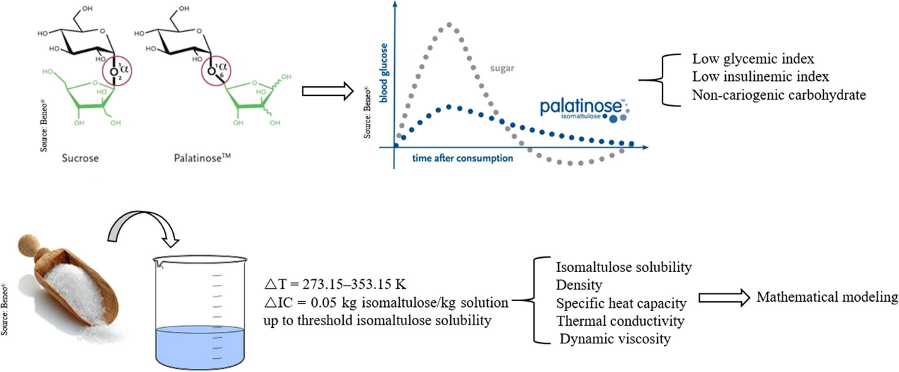
- Figure 5: Structural differences of sucrose and palatinose (A). Differences in plasma glucose concentration comparing sucrose vs palatinose (B)

- Figure 6: Glucose and insulin concentrations comparing palatinose vs maltodextrin
ESSENTIAL AMINO ACIDS
Amino acids are considered essential amino acids when your body cannot produce them on its own . These are: histidine, isoleucine, leucine, lysine, methionine, phenylalanine, threonine, tryptophan and valine.
When we take a food or supplement that contains proteins, these, in the digestion process, are broken down forming amino acids. These amino acids help the body to :
- Grow
- Repair body tissue
- Perform many other bodily functions
They can also be used as a source of energy through a process called gluconeogenesis (Fig. 7)

- Figure 7: Gluconeogenesis.
With its name, we can guess that it is a process through which glucose is synthesized from the degradation of proteins (proteolysis) or lipids (lipolysis). When we do a high-intensity exercise, and/or we have exhausted our glycogen reserves, the body will turn to those nutrients to produce glucose, and in this way, continue providing energy. It should be noted that proteolysis only occurs in the event of permanent hypoglycemia.
Therefore, when faced with high-intensity exercise, resorting to these essential amino acids will prevent proteolysis from occurring due to the degradation of skeletal muscle, thus using the contribution of essential amino acids as a supply. This will not only preserve our lean tissue, but also serve as indirect contributions in obtaining energy, saving muscle glycogen and avoiding hypoglycemia.
Surely you have also heard or read about BCAA'S (Branched Chain Amino Acids, for its acronym in English. Branched chain amino acids or branched amino acids). These BCAA'S are only 3 amino acids (Leucine, isoleucine and valine). In order of priority and taking into account that we cannot eat a solid meal while we train, not even a whey protein, unless it is with a high degree of hydrolysis due to the gastrointestinal discomfort that we would have, it would be reduced to:
- Hydrolyzed Protein with a high % hydrolysis (example, peptopro)
- Essential amino acids
- BCAA'S
In the case of Real Intra , the choice of essential amino acids is based mainly on the high cost of hydrolyzed proteins, and that the differences with respect to essential amino acids are minimal.
SODIUM
Sodium plays a vital role in our body, helping to regulate muscle contraction, nerve function and blood volume. It also regulates fluid levels in the body .
Low sodium levels can cause dehydration, muscle cramps, or even organ failure .
Therefore, taking this into account, it is essential that during intense and/or resistance training, where a large amount of sodium is lost, a combination of salty foods or snacks and/or drinks rich in electrolytes can be very useful to maintain high levels of sodium. sodium levels .
During training you lose around 1 liter of sweat for every hour of exercise, and about 2 liters per hour if it is a very intense workout . A dose of between 200-250 mg of sodium is very useful in these cases .
STUDIES
When we face strength or resistance training that includes a high level of contractile activity by skeletal muscle, nutritional status and hormonal action influence the magnitude of exercise-induced skeletal muscle growth. However, it is not the independent action of a single mechanism, but the complex interaction between events that improves long-term adaptations to strength training.
In a randomized controlled trial by Bird, SP et. al, 2006, the influence of liquid carbohydrate (CHO) and essential amino acid (EAA) intake during resistance exercise and modification of the immediate hormonal response on myofibrillar protein degradation as assessed by excretion of 3 -methylhistidine (3-MH) *.
After a 4-hour fast, 32 untrained young men (18-29 years) performed a single set of resistance exercises (full body; 3 sets x 10 repetitions at 75% of 1 repetition maximum; 1 minute rest between sets ), during which they consumed a 6% CHO solution (n=8), 6 g of EAA (n=8), a combined CHO+EAA supplement (n=8) or placebo (PLA; n=8) .
Resistance exercise performed in conjunction with CHO and CHO+EAA intake resulted in significantly elevated glucose and insulin concentrations, while EAA intake alone increased the post-exercise insulin response . At the same time point at 60 minutes , the PLA group exhibited a maximal increase in cortisol of 105% , with no significant changes in glucose or insulin concentrations. In contrast, the CHO and CHO+EAA groups showed a decrease in cortisol levels of 11% and 7%, respectively . Coinciding with these hormonal response patterns , there were significant differences in the degradation of myofibrillar proteins . Ingestion of EAA and CHO treatments attenuated 3-MH excretion 48 hours after the exercise session. Furthermore, this response was synergistically enhanced when the 2 treatments were combined, with ingestion of CHO+EAA resulting in a 27% reduction.
With this data we can discover another benefit of consuming a carbohydrate drink along with essential amino acids, and that is the decrease in cortisol , a hormone that increases in the face of any stressor such as high-intensity or resistance exercise.
In conclusion, the co-ingestion of carbohydrates together with essential amino acids and sodium, in a context of high-intensity or long-duration resistance physical exercise, helps not only to provide us with adequate nutrients without causing gastrointestinal discomfort, but also , as we have explained throughout the article: it increases sports performance since it will allow us to train with more intensity, and favors correct recovery , as observed in the study by Ivy, JL, 2004, where it states that:
- “The efficiency of muscle glycogen storage can be significantly increased with the addition of protein or essential amino acids to a carbohydrate supplement.” *This only occurs if CHO intake is ± 0.8 g/kg/hour. If 1.2 g/kg/hour is ingested, similar results are obtained. Depending on the context of the athlete, a certain strategy will be used.
- Adding protein or amino acids to a carbohydrate supplement also has the added benefit of limiting post-exercise muscle damage and promoting muscle protein synthesis.” *In terms of limiting muscle damage, there are still no conclusive results, especially when an optimal protein intake is consumed. The addition of essential amino acids to the formulation can be very useful for athletes who are in energy deficit, type of protocol, athletes who train intensely for several hours and endurance athletes, where it would be the ideal supplement.
*Editor's Notes
* 3-methylhistidine (3-MH): it is one of the semi-essential amino acids. It appears released once the proteins myosin and actin, responsible for muscle contraction, are degraded.
TIMING AND DOSE
At BIG, we recommend a 40g scoop of product diluted in 500ml-1l of water . The dose can be increased depending on the duration of the training, but the % dissolution must be respected .
Preferably consume 15 minutes before training and ingest small amounts during training. Finish the drink approximately 30 min. before the end of it and continue with water .
REFERENCES
- Alghannam AF, Gonzalez JT, Betts JA. Restoration of Muscle Glycogen and Functional Capacity: Role of Post-Exercise Carbohydrate and Protein Co-Ingestion. Nutrients. 2018; 10(2):253. https://doi.org/10.3390/nu10020253
- American College of Sports Medicine, Sawka MN, Burke LM, Eichner ER, Maughan RJ, Montain SJ, Stachenfeld NS. American College of Sports Medicine position stand. Exercise and fluid replacement. Med Sci Sports Exerc. 2007 Feb;39(2):377-90. doi: 10.1249/mss.0b013e31802ca597. PMID: 17277604.
- American Dietetic Association; Dietitians of Canada; American College of Sports Medicine, Rodriguez NR, Di Marco NM, Langley S. American College of Sports Medicine position stand. Nutrition and athletic performance. Med Sci Sports Exerc. 2009 Mar;41(3):709-31. doi:10.1249/MSS.0b013e31890eb86. PMID: 19225360.
- Biolo G, Williams BD, Fleming RY, Wolfe RR. Insulin action on muscle protein kinetics and amino acid transport during recovery after resistance exercise. Diabetes. 1999 May;48(5):949-57. doi: 10.2337/diabetes.48.5.949. PMID: 10331397.
- Bird SP, Tarpenning KM, Marino FE. Independent and combined effects of liquid carbohydrate/essential amino acid ingestion on hormonal and muscular adaptations following resistance training in untrained men. Eur J Appl Physiol. 2006 May;97(2):225-38. doi:10.1007/s00421-005-0127-z. Epub 2006 Mar 24. Erratum in: Eur J Appl Physiol. 2006 May;97(2):239. PMID: 16456674.
- Bird SP, Tarpenning KM, Marino FE. Liquid carbohydrate/essential amino acid ingestion during a short-term bout of resistance exercise suppresses myofibrillar protein degradation. Metabolism. 2006 May;55(5):570-7. doi: 10.1016/j.metabol.2005.11.011. PMID: 16631431.
- Børsheim E, Tipton KD, Wolf SE, Wolfe RR. Essential amino acids and muscle protein recovery from resistance exercise. Am J Physiol Endocrinol Metab. 2002 Oct;283(4):E648-57. doi: 10.1152/ajpendo.00466.2001. PMID: 12217881.
- Davison GW, McClean C, Brown J, Madigan S, Gamble D, Trinick T, Duly E. The effects of ingesting a carbohydrate-electrolyte beverage 15 minutes prior to high-intensity performance exercise. Res Sports Med. 2008;16(3):155-66. doi: 10.1080/15438620802103155. PMID: 18785059.
- Furuyashiki T, Tanimoto H, Yokoyama Y, Kitaura Y, Kuriki T, Shimomura Y. Effects of ingesting highly branched cyclic dextrin during endurance exercise on rating of perceived exertion and blood components associated with energy metabolism. Biosci Biotechnol Biochem. 2014;78(12):2117-9. doi: 10.1080/09168451.2014.943654. Epub 2014 Jul 31. PMID: 25080121.
- Horner K, Drummond E, O'Sullivan V, SC Sri Harsha P, Brennan L. Effects of a casein hydrolysate versus intact casein on gastric emptying and amino acid responses. Eur J Nutr. 2019 Apr;58(3):955-964. doi:10.1007/s00394-018-1610-8. Epub 2018 Jan 10. PMID: 29322315.
- Hulmi, JJ, Lockwood, CM & Stout, JR Effect of protein/essential amino acids and resistance training on skeletal muscle hypertrophy: A case for whey protein. Nutr Metab (Lond) 7, 51 (2010). https://doi.org/10.1186/1743-7075-7-51
- Hulston CJ, Wallis GA, Jeukendrup AE. Exogenous CHO oxidation with glucose plus fructose intake during exercise. Med Sci Sports Exerc. 2009 Feb;41(2):357-63. doi: 10.1249/MSS.0b013e3181857ee6. PMID: 19127189.
- Ivy JL (2004). Regulation of muscle glycogen repletion, muscle protein synthesis and repair following exercise. Journal of sports science & medicine, 3(3), 131–138.
- Ivy JL, Res PT, Sprague RC, Widzer MO. Effect of a carbohydrate-protein supplement on endurance performance during exercise of varying intensity. Int J Sport Nutr Exerc Metab. 2003 Sep;13(3):382-95. doi: 10.1123/ijsnem.13.3.382. PMID: 14669937.
- Jeukendrup A. The new carbohydrate intake recommendations. Nestle Nutr Inst Workshop Ser. 2013;75:63-71. doi: 10.1159/000345820. Epub 2013 Apr 16. PMID: 23765351.
- Jeukendrup AE. Carbohydrate and exercise performance: the role of multiple transportable carbohydrates. Curr Opin Clin Nutr Metab Care. 2010 Jul;13(4):452-7. doi: 10.1097/MCO.0b013e328339de9f. PMID: 20574242.
- Jeukendrup AE. Periodized Nutrition for Athletes. Sports Med. 2017 Mar;47(Suppl 1):51-63. doi:10.1007/s40279-017-0694-2. PMID: 28332115; PMCID: PMC5371625.
- Juliana Rodrigues do Carmo, Jefferson Luiz Gomes Corrêa, Tiago Carregari Polachini, Javier Telis-Romero, Properties of isomaltulose (Palatinose®) – An emerging healthy carbohydrate: Effect of temperature and solute concentration, Journal of Molecular Liquids, Volume 347, 2022, 118304 , ISSN 0167-7322, https://doi.org/10.1016/j.molliq.2021.118304 .
- Koivisto VA, Karonen SL, Nikkilä EA. Carbohydrate ingestion before exercise: comparison of glucose, fructose, and sweet placebo. J Appl Physiol Respir Environ Exerc Physiol. 1981 Oct;51(4):783-7. doi: 10.1152/jappl.1981.51.4.783. PMID: 7028704.
- Lee, Ho-Jae & Cha, Ji-Young. (2018). Recent insights into the role of ChREBP in intestinal fructose absorption and metabolism. BMB reports. 51. 10.5483/BMBRep.2018.51.9.197.
- Manninen, AH Protein hydrolysates in sports nutrition. Nutr Metab (Lond) 6, 38 (2009). https://doi.org/10.1186/1743-7075-6-38
- Miyashita M, Hamada Y, Fujihira K, Namura S, Sakazaki M, Miyasaka K, Nagai Y. The effects of isomaltulose ingestion on gastric parameters and cycling performance in young men. J Exerc Sci Fit. 2019 Jul;17(3):101-107. doi: 10.1016/j.jesf.2019.06.001. Epub 2019 Jun 13. PMID: 31303872; PMCID: PMC6599884.
- Morgan PT, Breen L. The role of protein hydrolysates for exercise-induced skeletal muscle recovery and adaptation: a current perspective. Nutr Metab (London). 2021;18(1):44. Published 2021 Apr 21. doi:10.1186/s12986-021-00574-z
- Nicholas CW, Williams C, Lakomy HK, Phillips G, Nowitz A. Influence of ingesting a carbohydrate-electrolyte solution on endurance capacity during intermittent, high-intensity shuttle running. J Sports Sci. 1995 Aug;13(4):283-90. doi: 10.1080/02640419508732241. PMID: 7474041.
- Nosaka K, Sacco P, Mawatari K. Effects of amino acid supplementation on muscle soreness and damage. Int J Sport Nutr Exerc Metab. 2006 Dec;16(6):620-35. doi: 10.1123/ijsnem.16.6.620. PMID: 17342883.
- Ormsbee MJ, Bach CW, Baur DA. Pre-exercise nutrition: the role of macronutrients, modified starches and supplements on metabolism and endurance performance. Nutrients. 2014;6(5):1782-1808. Published 2014 Apr 29. doi:10.3390/nu6051782
- Rasmussen BB, Tipton KD, Miller SL, Wolf SE, Wolfe RR. An oral essential amino acid-carbohydrate supplement enhances muscle protein anabolism after resistance exercise. J Appl Physiol (1985). 2000 Feb;88(2):386-92. doi: 10.1152/jappl.2000.88.2.386. PMID: 10658002.
- Saunders MJ, Moore RW, Kies AK, Luden ND, Pratt CA. Carbohydrate and protein hydrolysate coingestions improvement of late-exercise time-trial performance. Int J Sport Nutr Exerc Metab. 2009 Apr;19(2):136-49. doi: 10.1123/ijsnem.19.2.136. PMID: 19478339.
- Smith JW, Zachwieja JJ, Péronnet F, Passe DH, Massicotte D, Lavoie C, Pascoe DD. Fuel selection and cycling endurance performance with ingestion of [13C] glucose: evidence for a carbohydrate dose response. J Appl Physiol (1985). 2010 Jun;108(6):1520-9. doi: 10.1152/japplphysiol.91394.2008. Epub 2010 Mar 18. PMID: 20299609.
- Takahisa Shiraki, Takashi Kometani, Kayo Yoshitani, Hiroki Takata, Takeo Nomura, Evaluation of Exercise Performance with the Intake of Highly Branched Cyclic Dextrin in Athletes, Food Science and Technology Research, 2015, Volume 21, Issue 3, Pages 499-502, Released on J-STAGE September 10, 2015, Online ISSN 1881-3984, Print ISSN 1344-6606, https://doi.org/10.3136/fstr.21.499, https://www.jstage.jst.go.jp/article /fstr/21/3/21_499/_article/-char/en
- Tipton KD, Borsheim E, Wolf SE, Sanford AP, Wolfe RR. Acute response of net muscle protein balance reflects 24-h balance after exercise and amino acid ingestion. Am J Physiol Endocrinol Metab. 2003 Jan;284(1):E76-89. doi: 10.1152/ajpendo.00234.2002. Epub 2002 Sep 11. PMID: 12388164.
- Tipton KD, Rasmussen BB, Miller SL, Wolf SE, Owens-Stovall SK, Petrini BE, Wolfe RR. Timing of amino acid-carbohydrate ingestion alters anabolic response of muscle to resistance exercise. Am J Physiol Endocrinol Metab. 2001 Aug;281(2):E197-206. doi: 10.1152/ajpendo.2001.281.2.E197. PMID: 11440894.
- van Loon LJ, Greenhaff PL, Constantin-Teodosiu D, Saris WH, Wagenmakers AJ. The effects of increasing exercise intensity on muscle fuel utilization in humans. J Physiol. 2001 Oct 1;536(Pt 1):295-304. doi: 10.1111/j.1469-7793.2001.00295.x. PMID: 11579177; PMCID: PMC2278845.
- Wilburn, D., Machek, S., & Ismaeel, A. (2021). Highly Branched Cyclic Dextrin and its Ergogenic Effects in Athletes: A Brief Review. Journal of Exercise and Nutrition, 4(3). https://doi.org/10.53520/jen2021.103100




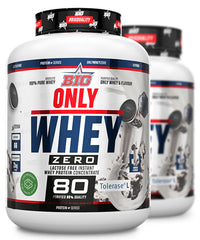
![CREABIG [Creapure®]](http://bigsupps.site/cdn/shop/products/producto_BIG_creabig_creapure_250g_0noflavour_500x600_8c48a126-a2a2-46a5-9bbd-8763ab82d768_200x.jpg?v=1757315967)
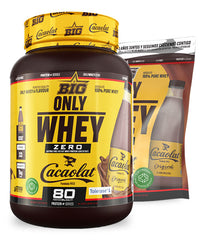
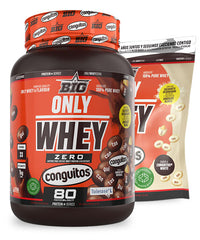
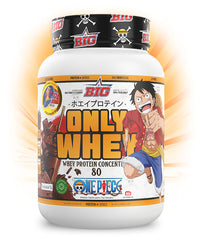
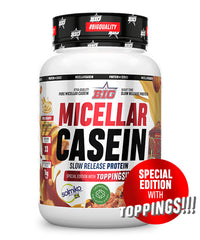
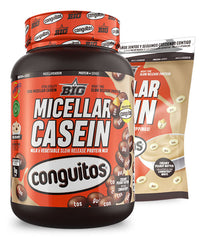
![CFM ISO ZERO [saco]](http://bigsupps.site/cdn/shop/files/producto_cfm_doypack_0noflavour_500x600a_200x.jpg?v=1750981452)
![CLEAR ISO ZERO [750g]](http://bigsupps.site/cdn/shop/files/producto_BIG_clearprotein_icepop_0noflavour_500x600a_200x.jpg?v=1757074297)
![CREABIG FIESTA® KOJAK® flavor - [250g]](http://bigsupps.site/cdn/shop/files/producto_BIG_creabig_kojak_0noflavour_500x600a_200x.jpg?v=1763548822)


